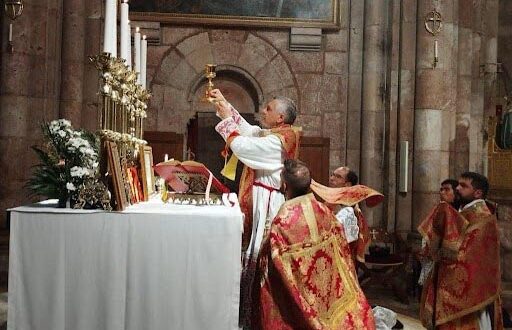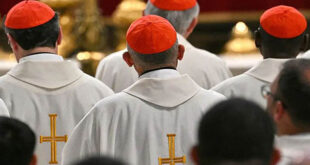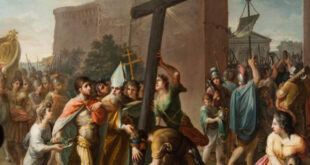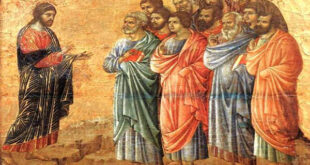In the Catholic Church, few things ignite such strong passions as the Traditional Latin Mass, also known as the Extraordinary Form of the Roman Rite or the Tridentine Mass. For many faithful, it is a profound source of spiritual connection and a sublime expression of faith, while for others, it sparks rejection, division, or even discomfort. But why does it evoke such conflicting feelings? What lies behind the tension surrounding this rich and meaningful liturgy? In this article, we will explore the roots of this debate, the theological value of the Traditional Mass, and how it can help us deepen our faith and spiritual life.
The Traditional Mass: A treasure that connects heaven and earth
The Tridentine Mass, codified at the Council of Trent (hence its name), was celebrated with virtually no significant changes for over 400 years until the liturgical reforms of the Second Vatican Council. In this context, the Traditional Mass is not merely an old form of worship but an immutable legacy that reflects the continuity and richness of Catholic tradition.
From Gregorian chant, Latin prayers, the use of incense, and the ad orientem posture (facing east), every element of this liturgy is imbued with profound theology. Everything points to God, emphasizing the sacrificial and supernatural character of the liturgical act.
For many Catholics, attending a Traditional Mass feels like stepping into a space where time seems to stand still, where the distractions of the modern world fade, and where the mystery of Christ’s sacrifice can be experienced in its fullness.
The current conflict: Tradition versus modernity
The rejection of the Traditional Mass is not new, but it has taken on a unique tone in today’s context. Some of the arguments commonly raised against it include:
- Perception of exclusivity: For many, the use of Latin and the complexity of gestures and prayers may seem distant from the people, as if it were a liturgy reserved for the “elite.”
- Contrast with the Novus Ordo Mass: The Ordinary Form, celebrated in the vernacular and with a more participatory approach, is seen as more accessible and aligned with the community.
- Ideological conflict: The Tridentine Mass has been adopted by some groups that openly reject certain teachings of the Second Vatican Council, leading to an erroneous association between the liturgy and an “anti-modern Church” stance.
However, reducing the rejection to issues of language or ideology is to remain on the surface. At its core, the resistance reflects a clash of worldviews: a Church striving to adapt to the modern world versus one seeking to preserve what is eternal and unchanging.
The theological value of the Traditional Mass
To understand the significance of the Tridentine Mass, it is essential to reflect on its profound theology:
- The sacrificial character: Unlike many modern celebrations that focus on the community, the Traditional Mass emphasizes Christ’s sacrifice at Calvary. It is a solemn reminder that the Eucharist is not merely a banquet but the supreme act of redemption.
- Worship of God: The ad orientem posture symbolizes the unity of the priest and the faithful facing God together. This gesture reminds us that the Mass is not a horizontal dialogue between attendees but an act of worship that transcends the earthly realm.
- Mystery and reverence: The use of Latin and the solemn ceremonies are not designed to exclude but to highlight God’s transcendence. What is not easily understood invites us to meditate more deeply.
Is the Traditional Mass a problem for ecumenism?
One of the most common criticisms of the Tridentine Mass is that it could be an obstacle to ecumenical dialogue. Some argue that its focus on reverence and “archaic” practices might alienate those seeking a more accessible and modern Church.
However, this perspective overlooks a crucial point: unity in truth. The richness of Catholic tradition is not meant to be diluted to please the world but to be offered as a vibrant testimony of faith. Far from being a problem, the Traditional Mass can be a powerful tool for ecumenism, as it demonstrates the depth, coherence, and beauty of the Catholic faith in its fullness.
Why so much hatred? The spiritual root of the conflict
The Tridentine Mass is not merely a form of liturgy; it is a constant reminder of the supernatural, the necessity of sacrifice, and the centrality of God in our lives. In a society marked by individualism and relativism, this message can feel uncomfortable.
Even within the Church, the temptation to conform to the spirit of the world has led many to see the Traditional Mass as something “uncomfortable” because it calls us to look beyond ourselves and embrace the cross.
As Pope Benedict XVI wrote, “The beauty of the liturgy is not something superficial; it is a reflection of the beauty of God Himself.” For this reason, the Traditional Mass should not be feared or rejected but rediscovered and valued as a treasure for the entire Church.
How can we apply this legacy to our daily lives?
- Rediscover the sense of sacrifice: The Tridentine Mass reminds us that faith involves giving, not just receiving. This invites us to live a life more devoted to God and others.
- Appreciate silence: In a world full of noise, the solemnity of this liturgy invites us to rediscover the value of silence as a space to encounter God.
- Value the sacred: Recovering the sense of the sacred in the liturgy can help us deepen our relationship with God and seek Him in every aspect of our lives.
Conclusion: A call to reconciliation
The debate over the Traditional Mass should not divide us but enrich us. Instead of seeing it as a problem, we can rediscover it as a treasure that strengthens our faith and connects us to the Church’s rich history.
If there is rejection of the Tridentine Mass, perhaps it is not due to the Mass itself but to a lack of understanding of its beauty and depth. As Catholics, we are called to value this legacy, not just as a form of liturgy but as a bridge between heaven and earth.
Are you willing to take a step toward the beauty, mystery, and reverence of this celebration? By doing so, you may rediscover not only the richness of tradition but also a renewed faith and a deeper encounter with God.






